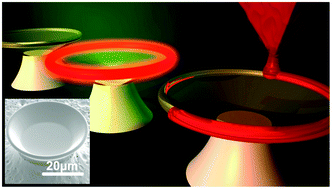On-chip microlasers for biomolecular detection via highly localized deposition of a multifunctional phospholipid ink†
Abstract
We report on a novel approach to realize on-chip microlasers, by applying highly localized and material-saving surface functionalization of passive photonic whispering gallery mode microresonators. We apply


 Please wait while we load your content...
Please wait while we load your content...